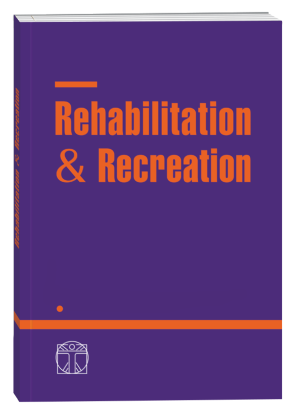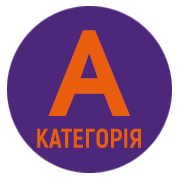PHYSICAL ACTIVITY OF STUDENTS WITH DISABILITIES – SELECTED ISSUES
DOI:
https://doi.org/10.32782/2522-1795.2023.14.21Keywords:
physical activity, disabled students, disability.Abstract
The health of the population, and above all children and youth, is a fundamental value in the development strategies of most countries in the world. The World Health Organization, defining its main goals for Europe in the Health 2020 program, points to the promotion of health and the reduction of inequalities in health. However, in order to define specific objectives in individual countries, it is necessary to thoroughly diagnose the existing situation, the main threats, and to define target groups for preventive and intervention activities. A very complex element is also the assessment of inequalities in health, and above all their psychosocial causes. The activity of an individual is one of the main factors influencing the development of its mental processes and properties, it is the opposition of the active state of the body to states of passivity, immobility, lack of reaction. Activity is both a concrete act of action and the ability to actively regulate relations with the environment, according to human needs, goals and ideals. Therefore, one of the most important tasks of a modern school is the activation of students, giving them the opportunity to develop various forms of their activity, and at the same time enabling the individual to fully meet their mental, physical and social needs. At school, it can manifest itself in the cognitive, physical, productive, social, cultural and artistic activities. In the process of educating students with disabilities, particular importance is attached to physical activity, which not only serves to maintain their health and general fitness so that they can function as fully as possible in social life, but is also a form of physical rehabilitation, an element of psychotherapy. It manifests itself through various forms of physical activity of utilitarian importance (walking, running, physical work) in connection with professional, home or recreational activities (walking, sports, tourism, dancing, physical games, physical exercises). Physical activity understood as a consciously directed action is also a factor directly affecting the body's activities and enabling its adaptation, especially to long-term physical effort, and preventing the development of many civilization diseases, constituting a research challenge for many fields and scientific disciplines.
References
Diachenko-Bohun M., Hrytsai N., Grynova M., Grygus I., Muszkieta R., Napierała M., Zukow W. (2019). Characteristics of Healthbreakers in the Conditions of Realization of Health- Safety Technologies in Education Structures. International Journal of Applied Exercise Physiology. 8(3.1), 1-8.
Dłużewska-Martyniec W. (2019). Aktywność sportowa osób z niepełnosprawnością intelektualną. GWP, Gdańsk.
Górna-Łukasik K. (2009). Wiadomości z kultury fizycznej a przygotowanie ucznia do pracy samodzielnej. Wychowanie Fizyczne i Zdrowotne, nr 9.
Graczyk M., Skalski D.W., Kowalski D., Kindzer B., Grygus I., Nesterchuk N. (2022). Rozwój poznawczy, emocjonalny i społeczny dzieci niepełnosprawnych pod wpływem hipoterapii. 11:146-156. https://doi.org/10.32782/2 522-1795.2022.11.17
http://form.stat.gov.pl/BadaniaAnkietowe/ 2019/harmonogram.htm
https://public.ccsds.org/meetings/2019
Instytut Matki i Dziecka. (2020). Aktywność fizyczna młodzieży szkolnej w wieku 9-17 lat, aktualne wskaźniki, tendencje ich zmian oraz wybrane zewnętrzne i wewnętrzne uwarunkowania. Projekt realizowany na zlecenie Ministerstwa sportu i turystyki. Warszawa.
Kokhan S.T., Pateyuk A.V., Mingalova M.S., Grygus I.M. Use hippotherapy in physical rehabilitation of patients with different pathologies. Journal of Education, Health and Sport. 2015;5(2):289-296.
Maszczak T. (1999). Sport dla osób niepełnosprawnych. Szanse i zagrożenia [w:] Kowalik St. (red.). Sport dla osób niepełnosprawnych. Osoby niepełnosprawne dla sportu. AWF Poznań – Olomouc.
Osiński W. (2002). Zarys teorii wychowania fizycznego. AWF Poznań.
Savliuk S., Kashuba V., Romanova V., Afanasiev S., Goncharova N., Grygus I., Gotowski R., Vypasniak I., Panchuk A. (2020). Implementation of the Algorithm for Corrective and Preventive Measures in the Process of Adaptive Physical Education of Pupils with Special Needs. Teorìâ Ta Metodika Fìzičnogo Vihovannâ, 20(1), 4-11. https://doi.org/10.17309/tmfv.2020.1.01
Tomporowska J., Jaworska U., Skalski D.W., Dębski S.S. (2022). Pedagogika specjalna. Wybrane zagadnienia. PSW Starogard Gdański.
Wyczesany J. (2002). Pedagogika upośledzonych umysłowo. Impuls, Kraków.
Downloads
Published
How to Cite
Issue
Section
License

This work is licensed under a Creative Commons Attribution-NonCommercial-NoDerivatives 4.0 International License.












